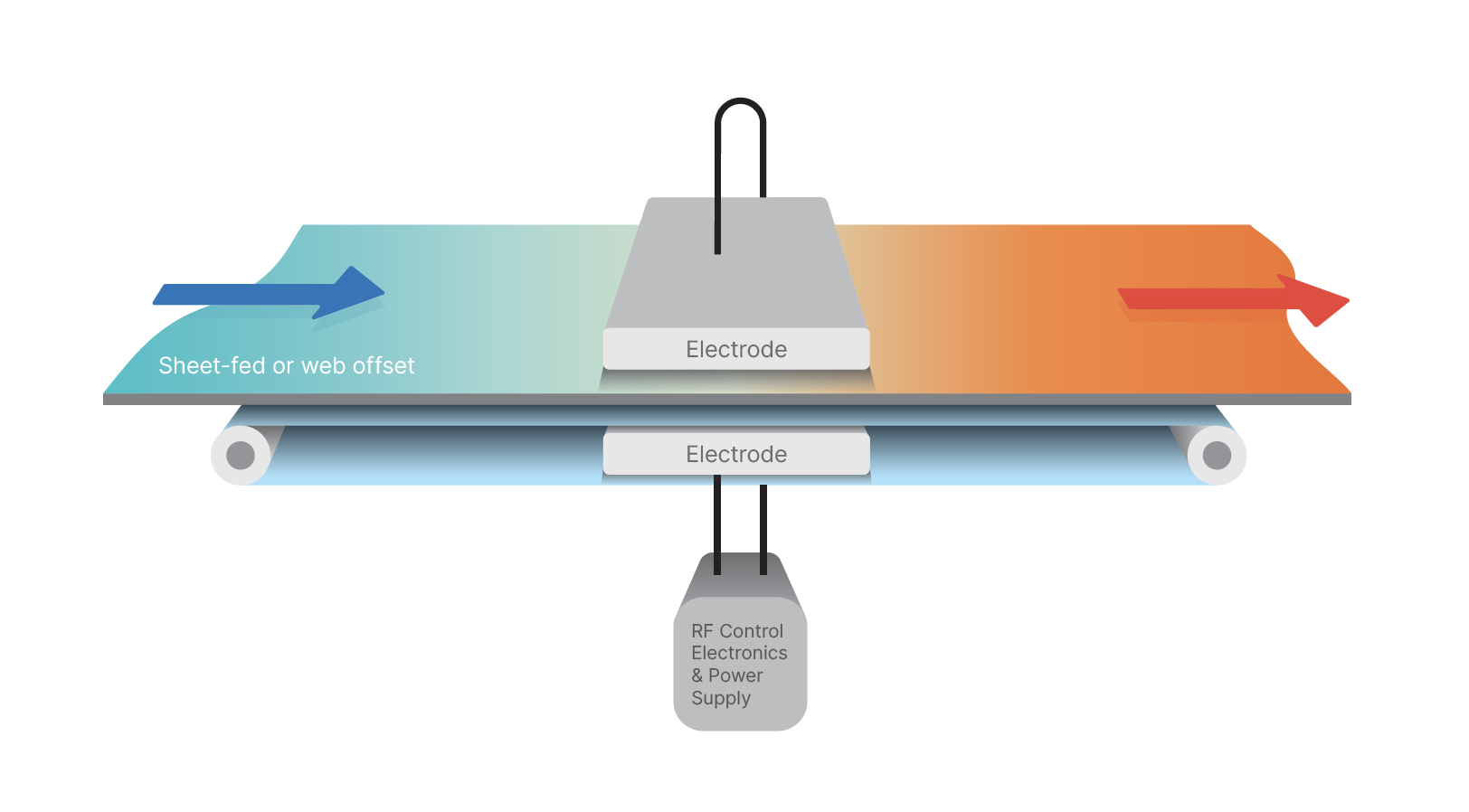Dr Peter Brown is director of industrial at Cambridgeshire-based product development and innovation consultancy 42 Technology.
The Cambridge area is a hotspot for UK inkjet developments and Brown has spent much of his career working on new products and processes involving inkjet, digital deposition and precision coating.
He said that the take-up of water-based inkjet was likely to increase, but this posed challenges in terms of drying the resulting output.
“There are lots of regulations coming in, in particular led by Europe, that are driving people towards water-based inks,” he said.
“Water is cheap and safe, but there is the pesky problem of not being able to dry it.”
The energy price crisis has also resulted in additional scrutiny on running costs.
“Some existing systems require hundreds of kilowatts of drying power,” Brown noted.
“There’s a host of application areas where clients are coming to us, and asking how they can get around the problem of slow drying – and it’s not enough to just have heat because some of the potential options, such as air blades, are quite energy-inefficient.”
Brown said that while he was looking into the pros and cons of a variety of different drying methods he had unearthed a potential alternative – dielectric heating.
Dielectric heating is an umbrella term covering both RF (radio frequency) and microwave heating technologies. Both approaches are widely used in industrial processes such as curing glues in plywood manufacturing, and in food manufacturing.
“If you apply an electric field at the right frequency the water molecules will react strongly – that’s how microwave ovens work. You can get microwave ovens that are tens of feet long and that are used for drying or cooking baked goods. That’s too big for the printing process, but the principle is established. You can use dielectric to deliver heat and it’s quite efficient,” Brown explained.
“There’s another way of using dielectric, instead of using microwave frequencies you drop down into megahertz, and that’s very easy to produce using electronics. So it occurred to us that with a flat substrate like paper you can get the electrodes really, really close and get quite a lot of heating power – sufficient to bring the drying time of water-based things really low.”
The schematic below shows one electrode plate above the paper and one below to generate the alternating electric field. But it could equally be an array of smaller electrodes above and below depending on the target application.
 Illustration shows the key elements of an RF heating system for faster and more energy-efficient drying of water-based inks
Illustration shows the key elements of an RF heating system for faster and more energy-efficient drying of water-based inks
Brown said that the technique would not be a universal panacea for all drying issues, but it definitely had potential.
“I think for some applications where efficiency is a problem and you don’t want to have big hot air blowers, it could be that dielectric heating and in particular RF heating could be a solution worth looking at.”
Brown said it would be possible to have a laboratory prototype working “in a few months” if industry manufacturers were keen to explore the idea.
“We’ve been talking to a small number of people about it and they are fascinated,” he added.
Drying methods and energy-efficiency will be among the hot topics for visitors to this week’s Hunkeler Innovationdays event, where a raft of high-speed inkjets from the major manufacturers are on show.











